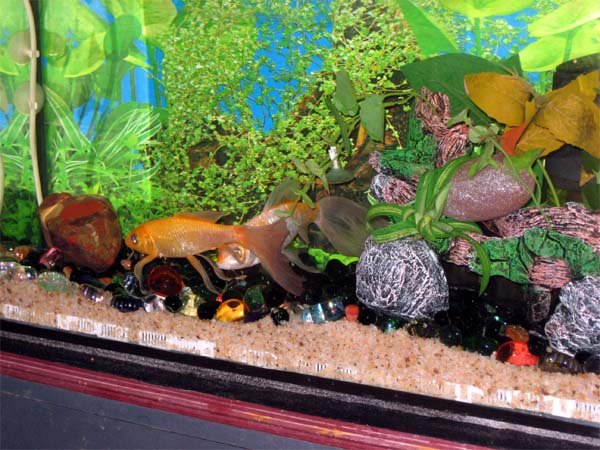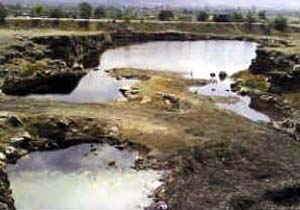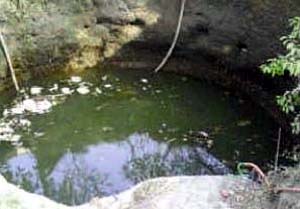Oct 30, 2025
Oct 30, 2025
One might wonder what our urban centers have to do with aquariums! Well yes there is no commonality between the two, yet there is a major problem which plagues the both. It is the problem of disposal of solid waste. Those who rear fishes in aquariums know that if ammonia generated through their poop is not properly managed, the fishes die. Congested human agglomerates are facing the same problem in India today. 'During the flourishing civilizations from 300 to 1000 BC, solid waste was placed in large pits with a layer of soil cover', say Amar M. Dhere of Department of Environmental Science, Indira College of Commerce and Science, Pune and his co-researchers from Sangola College, Sangola, Department of Geography, SM College, Akluj and CESJ & HD, Yashada, Pune, Maharashtra. These researchers made a detailed study of the problem of solid waste management in Pune city and its impact on air and groundwater quality. The outcome of their research was published in September, 2008 issue of Current Science.
The generation of solid waste started the day humans changed their life-style from a hunter-gatherer to cultivator. As long as they were wandering about, like animals, whatever waste they generated must have been strewn over the area of their territory or the area they traversed. The problem of waste started, once the settlements came up.
 As the human communities flourished, the need to manage the waste, cleanliness of the settlements etc became imperative. Thus came the municipalities and the waste generated in the communities was termed as municipal waste. It is broadly of two types: the human excreta and the municipal solid waste. Dhere and his co-workers have carried out detailed study of the disposal of the municipal solid waste (MSW) and the after effects thereof.
As the human communities flourished, the need to manage the waste, cleanliness of the settlements etc became imperative. Thus came the municipalities and the waste generated in the communities was termed as municipal waste. It is broadly of two types: the human excreta and the municipal solid waste. Dhere and his co-workers have carried out detailed study of the disposal of the municipal solid waste (MSW) and the after effects thereof.
The quantity of MSW produced daily in the form of paper, plastic, rag, metal, glass pieces, ash, scrap materials, waste papers, dead animals, discarded chemicals, paints, hazardous hospital waste, agricultural waste and compostable matter is gargantuan. Sad part is that the entire range of MSW is disposed off with the centuries old tradition of dumping it in depressions/landfills and covered with layers of soil cover. This procedure is also applied to the hospital or the bio-medical waste.
Solid waste generation in Indian cities is on the increase say Dhere and his colleagues. It has increased from an average per capita generation of 0.32/kg in 1971-73 to 0.48/kg/day in 1994. The figures have grown exponentially since then. Daily per capita generation of MSW ranges from 100 g in small towns to 500 g in large towns, say Dhere et al. A study conducted by NEERI, Nagpur on the MSW contents shows that major chunk is composed of 30-40% organic matter and 30-40% ash and fine earth, paper 3-6%, while plastic, glass and metal each is less than 1%.
 Since quite a bit of MSW contains organic matter, dumping it in the traditional landfills is nothing but an open invitation to birds, rodents and pests like fleas, for whom it is an attractive source for food. Microbes are present everywhere and they cause degradation of most of the solid waste. These get degraded to carbon dioxide and methane. Dhere et al report that Methane gas constitutes about 60% of a landfill. It is needless to emphasize here that Methane Gas is one of the worst atmospheric pollutants. Haphazard and unscientific disposal of solid waste leads to augmentation in atmospheric carbon dioxide and methane, which are the major cause of global warming some people believe.
Since quite a bit of MSW contains organic matter, dumping it in the traditional landfills is nothing but an open invitation to birds, rodents and pests like fleas, for whom it is an attractive source for food. Microbes are present everywhere and they cause degradation of most of the solid waste. These get degraded to carbon dioxide and methane. Dhere et al report that Methane gas constitutes about 60% of a landfill. It is needless to emphasize here that Methane Gas is one of the worst atmospheric pollutants. Haphazard and unscientific disposal of solid waste leads to augmentation in atmospheric carbon dioxide and methane, which are the major cause of global warming some people believe.
Microbial degradation of MSW aided by water leads to formation of a liquid termed leachate. It has high organic content, soluble salts and other pollutants which ultimately render the groundwater unfit for drinking. Recently, NEERI conducted a study of MSW dumped on the right bank of Gomti River at Lucknow to create a high ground for a memorial being erected by the government. As per the report the leachate from the dump has already polluted the river and groundwater too is threatened by pollution. Water polluted by leachates causes jaundice, nausea, asthma etc. It can even cause miscarriage and infertility.
Pune municipality produces about 1000 to 1200 metric tones of solid waste per day. Un-segregated MSW is carried and dumped at a landfill site near Urali-Devach village. The landfill has an area of about 43 hectares (ha), out of which about 15 ha is already filled up and sealed off permanently. Though the municipal authorities use state of art biological decomposition method for the waste, but the Extra Molecular (EM) culture used on the waste can not treat the un-segregated waste fully. The procedure used is excellent for organic waste only, it can not tackle the other types of wastes. Thus out of 1000-1200 metric tons of waste only 150 metric tones of waste is decomposed everyday and used as manure.
The remaining waste in the landfill is often burnt and clouds of heavy smoke result in respiratory problems for the villagers. Do we care? Similarly, the leachates have changed the composition of ground water from safe and potable to unsafe and contaminated. The process has been going on since 1983.
Come April and the heat causes methane in organic solid waste to burn and for three months Urali-Devach is covered under a pall of smoke with suspended particle matter (SPM) much higher (average annual being 1708.3 'g/metre cube of atmosphere) than the norms laid by the Central Pollution Control Board (CPCB). Inhalation of 0.1 to 100 'g SPM is enough to cause asthma and other respiratory diseases. All to all the air quality of Urali-Devach is bad. Similarly, average annual emission of sulphur dioxide and nitrous oxide as worked out by Dhere and his co-workers is 35% higher than the prescribed limits set by the CPCB. Both of these gases are known to cause lung disorders and in the present case, the most vulnerable are the residents of Urali-Devach, rag pickers and the truck drivers passing through the highway. They have to pay for the health of Pune residents with their health!
The leachate generated by the MSW dump is highly acidic and corrosive. It adds to the miseries of the residents as it percolates down to ground water and has already contaminated the resource. Tests conducted by Dhere et al have proved that ground water up to 800 metre from the dump site has been affected by the contamination from leachates.
Urali-Devach village, because of uncontrolled dumping of MSW is virtually sitting on a 'time bomb'. With air and ground water already heavily contaminated, it is time that the authorities concerned take up more scientific method of waste disposal. It includes three Rs say Dhere et al. That is reduce, reuse and recycle the waste. Segregation of bio-degradable and non-biodegradable waste at household level at Pune can considerably reduce the problem of decomposition of organic waste. It is easy to convert it in to manure or even generate electricity out of it, rather than just dumping it out of sight and making lives of villagers miserable. In fact waste to energy facilities though only 600 in numbers all over the world, are one the best ways to tackle the problem of solid waste.
If nothing works then at least the Pune Municipality can use to conventional and time tested method of covering the daily waste dumped in the landfill with a minimum 15 cm thick layer of soil and every week cover the matter with a 60 cm thick layer of soil and then compact the layers, before further addition of waste. This checks the formation of leachates and foul odor.
The Municipality at Pune can at least boast of a landfill and take pride of dumping the MSW there. In most of other densely populated cities even this facility is not available. It is a pity that the MSW is dumped in natural depressions, which were earlier lakes and compacted to make land for apartments. And even worse is disposing the MSW discreetly on the outskirts of habitats
09-Nov-2008
More by : V. K. Joshi (Bijji)